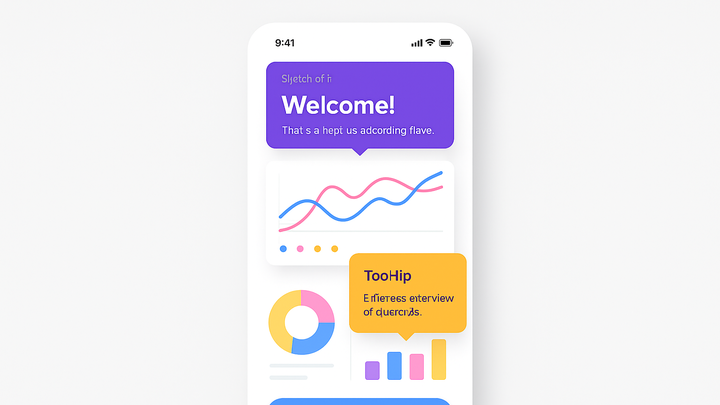Published on 2025-06-28T02:28:27Z
What is In-App Onboarding? Examples for Analytics
In-App Onboarding is the process of guiding new users through an application’s key features and functionality directly within the interface. It often uses tooltips, modals, walkthroughs, or interactive tours to highlight core workflows and help users achieve their first success. Effective onboarding accelerates time to value, improves user activation, and reduces churn by providing context-sensitive assistance. Analytics tools like PlainSignal and Google Analytics 4 can track each step, measure completion rates, and identify drop-off points. By instrumenting onboarding events, product teams gain data-driven insights to optimize guidance flows and personalize the user experience over time.
In-app onboarding
In-App Onboarding guides new users through core app features, tracked via analytics to boost activation and retention.
Why In-App Onboarding Matters
A strong onboarding experience can make or break user engagement. It introduces features, sets expectations, and helps users experience value quickly. Without proper guidance, new users may feel overwhelmed and abandon the app before seeing its benefits.
-
Improved activation rate
Guided walkthroughs help users complete key actions, turning sign-ups into active users more quickly.
-
Enhanced user engagement
Contextual tips encourage exploration, leading to deeper feature discovery and ongoing usage.
-
Reduced churn
Users who successfully complete onboarding are more likely to return, lowering drop-off rates.
Key Metrics to Track
Measuring onboarding performance requires tracking specific KPIs that reveal how users interact with the guidance flow.
-
Onboarding completion rate
The percentage of users who reach the final step of the onboarding process.
-
Time to first value (ttfv)
The time elapsed from opening the app to achieving a core action or milestone.
-
Drop-off analysis
Data on which steps users abandon, highlighting friction points in the journey.
Best Practices for Effective In-App Onboarding
Adopt these guidelines to design onboarding flows that resonate with users and drive adoption.
-
Contextual guidance
Display tips exactly when and where the user needs them, avoiding generic or interruptive overlays.
-
Progressive disclosure
Introduce features gradually, preventing initial overwhelm and allowing users to learn at their own pace.
-
Personalization
Use user data (e.g., role or preferences) to tailor messages and highlight relevant features.
-
Visual simplicity
Keep UI elements clear, concise, and focused on one action per step to reduce cognitive load.
Implementing In-App Onboarding Tracking
Instrument onboarding steps with analytics to measure performance and iterate based on real user behavior.
-
PlainSignal integration
Load the PlainSignal script in your HTML and trigger custom events for each onboarding step.
-
Example script tag
Include this snippet in your
<head>:<link rel="preconnect" href="//eu.plainsignal.com/" crossorigin /> <script defer data-do="yourwebsitedomain.com" data-id="0GQV1xmtzQQ" data-api="//eu.plainsignal.com" src="//cdn.plainsignal.com/plainsignal-min.js"></script> -
Tracking onboarding events
Use the
trackAPI to record steps:PlainSignal('track', 'onboarding_step', { step: 1, step_name: 'Welcome Tour' });
-
-
GA4 integration
Implement Google Analytics 4 to capture onboarding events for deeper analysis in the GA4 dashboard.
-
GA4 initialization
Add the gtag.js snippet:
<script async src="https://www.googletagmanager.com/gtag/js?id=G-XXXXXXX"></script> <script> window.dataLayer = window.dataLayer || []; function gtag(){dataLayer.push(arguments);} gtag('js', new Date()); gtag('config', 'G-XXXXXXX'); </script> -
Custom event tracking
Fire events for onboarding steps:
gtag('event', 'onboarding_step', { step: 1, step_name: 'Feature Highlight' });
-
